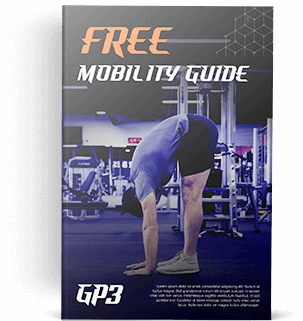Key Points:
1. The Fitness Industry is still quite new and is evolving quickly.
2. So, people often sort themselves into “fitness religions” and deny themselves the benefits of well-rounded training.
3. We should avoid becoming overly attached to any particular training method. There isn’t a “best” one!
Estimated reading time 4-8 minutes
Given its present ubiquity, it’s easy to forget the fitness industry is a relatively young one. However, there is still so much we don’t know about how the human body responds to training.
This should not be surprising, since “Personal Trainer” has only existed as a career choice for less than 50 years. Heck, the concept of exercise as a hobby has probably only been around for roughly 100 years. Prior to 1900, the average American either worked a fairly physically demanding job, didn’t have much free time, or both. The idea of needing extra physical work to stay healthy, or for “fun” wouldn’t have made much sense.
Sports existed, but to paraphrase the immortal words of Woody from Toy Story, they were little more than a child’s plaything. Sure, some adults enjoyed varying degrees of friendly competition in early versions of baseball, football, and basketball, and certain wealthier families would have participated in golf or tennis, but this was no arena in which someone could make a living.
Professional sports leagues didn’t really exist, and it would be a long while before they paid anywhere near what they do today. In researching this piece, I learned that the first ever million-dollar contract given to a professional athlete was signed in 1972. That year, Bobby Hull of the Winnipeg Jets inked a 10-season deal worth $1 million dollars. Adjusted for inflation, that comes out to an annual salary of around $800,000. An incredibly comfortable living to be sure, but nothing like the extravagance you see in professional sports today.
Here’s the point I’m trying to make in all of this. Until recently, there weren’t many financial or quality of life incentives to study the body’s response to exercise. There weren’t millions to be made from playing or coaching sports, and most people got enough physical activity in their daily lives. Because exercise science is a relatively new field of study…
Don’t become too attached to any particular training method
I’ve wondered many times which training methods I currently use with my clients will make me say, “I can’t believe I used to do that!” when I look back on them in a few years. I’m kidding myself if I think that won’t happen. Let’s look at the field of medicine, for example. Leeches were still commonly used until around 150 years ago! The point is, knowledge and best practice constantly evolve in any field. The younger the field, the faster this happens.
For example, I’ve moved away from many barbell movements with most of my clients. This is despite the barbell having been one of my favorite tools throughout my training career. Barbell movements like the squat, bench press, and deadlift were the primary ones I used to build my strength and physique, and for a long time, they were also key components of most of my clients’ training programs.
However, given what I’ve learned about such topics as short and long range training and the adaptability of tendons, ligaments, and fascia, I now believe that a training program built primarily around barbell movements is incredibly limited. Further, the inventions of the Swiss Bar for bench press, Yoke Bar for squats, and Trap Bar for deadlift arguably make the barbell an inferior choice for “the big three lifts.” This is not to say for a second that these movements or that barbells are without value, just that they shouldn’t be one’s main focus. Basically, let’s avoid becoming attached to them.
What’s your fitness religion?
On a related note, in the past couple of decades, people have started choosing their “fitness religions,” so to speak. Do you practice yoga, pilates, or spin? Or perhaps you’re more fond of a particular brand, like CrossFit or Orange Theory. There are even schisms within movements! Within strength training circles, just look at all the pointless debate over whether free weights or machines are “better.” Here’s a hint…they’re both great. All methods have their quirks and benefits, but there is no best one. Not even close. But, in their rush to belong, people start to invest parts of their identity in their favorite fitness method. While I’ve made it clear how I feel about the dangers of identity, (told you it would come up often!) this blind loyalty leads to missing out on benefits offered by other methods.
To highlight this, we’re going to look at two of the biggest social media fitness accounts right now: Dr. Joel Seedman and Ben Patrick (aka kneesovertoesguy). Interestingly, they built their respective followings with diametrically opposed viewpoints.
Dr. Seedman held a view for quite a while that serious athletes should never squat deeper than bending the knees to 90 degrees, since most sports never require a greater range of motion.
Ben Patrick, on the other hand, credited something entirely different for his amazing transformation from a 19-inch to a 42-inch vertical jump after multiple knee surgeries. He promoted his gradual progression from simply walking backwards to being able to perform exercises like this, which utilized extreme levels of knee flexion.
So, who’s right?
Well, they both are. The parallel I like to use is one I’ve mentioned before: nutrition. People have enjoyed incredible results from following vegan diets and from following carnivore diets, which are as nutritionally opposite as physically possible. Their commonality is their reduction in processed foods and increased intake of foods that keep you fuller, longer, relative to their caloric content. The rest is simply details, and not worth fighting over.
With Seedman and Patrick, their shared ground is increasing strength at particular joint angles. But, no joint angle is inherently “better.” What I’ve come to wholeheartedly believe is that an optimally-functioning joint should be able to handle force and reverse a motion at any point through its possible range. This means that quarter squats, half squats, and true “ass to grass” squats are all valuable.
Further, studies on isometric exercises (where a position is held under load for a set period of time) have shown that strength radiates only 15 degrees in either direction. While it’s somewhat intuitively obvious that becoming very strong in quarter squats won’t make you stronger in deep squats, the reverse is also true!
I used to (incorrectly) believe that strength in a deep squat would help me become stronger throughout the entire range of possible knee flexion and extension. When it didn’t, I was initially puzzled. It was only after I started focusing on short range knee extension exercises like the Poliquin Step that this started to click for me. I initially had discomfort in this exercise with bodyweight only. This was despite being able to easily squat well over double my bodyweight! And yet, this tiny range of motion was incredibly difficult.
Why? I was weak in that limited range of motion because my body had no practice reversing it under load. This may be more than you care to know about the physics of strength training, but bear with me here.
Amortization: And we ain’t talkin’ real estate!
You may be familiar with the terms “eccentric” and “concentric.” In case not, eccentric simply means lengthening, and is typically the “lowering” phase of any exercise. Think of the bench press, where you lower the bar to your chest, or pullups, where you lower your body and fully extend your elbows. With eccentric movements, the target muscles are lengthened.
In contrast, the concentric phase of an exercise is where the target muscles are shortened. This is usually the “upward” portion of any exercise: pressing the bar away from your chest in a bench press, and pulling your body towards the bar in a pullup.
In between, however, there is a crucial point called the “amortization phase.” Think of this as the transition between the eccentric and concentric portions of an exercise. Because force in one direction must be reversed in the other, it briefly goes to zero. This is the point at which injuries tend to occur, but also the point at which the best athletes can demonstrate their explosive prowess by moving through the amortization phase incredibly quickly.
The point is, being able to safely and powerfully transition through the amortization phase at any angle a joint is capable of tends to produce the most injury-proof joints. The ability to handle this force has a direct correlation with one’s high-power athletic abilities like sprinting and jumping.
This was game-changing knowledge for me. It was humbling to admit that the “quarter-squats” I used to deride actually have value. Now, I could have stubbornly clung to thinking that the method of squats I typically preferred were “best.” However, that would ultimately be detrimental to both my own training and the training of the people who pay me to coach them. Not a great strategy, eh?
Next week, we’re going to continue this discussion with a slightly deeper dive into having the courage to admit we’re wrong and the pitfalls of an over-reliance on strength training studies.
In the meantime, before you go, I’d love to hear from you! Do you have an example of a training method you used to love but no longer utilize? Reply and let me know!

